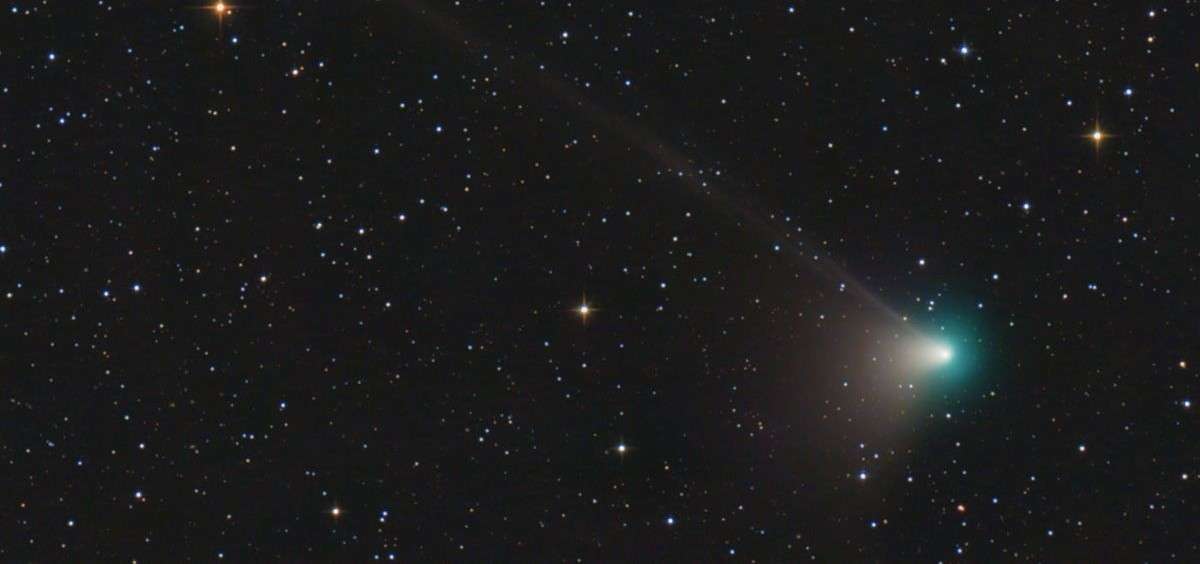Stargazing in December: Check Out the 'Mars Ballet', a Meteor Shower, and The 'Cold Moon'
This month is the brightest time to see Mars, the longest night of the year, and will also feature the Geminid Meteor Shower.

A bright green comet is passing through our solar system and has astrophotographers elated for the chance at a once-in-a-lifetime image.
Comet 2022 E3 (ZTF) is its name, and the last time it passed close enough to Earth it would have been seen by human and Neanderthal alike—around 50,000 years ago.
On January 12th it passed the closest point to the sun, and in the two weeks leading up to February 1st, its closest approach to Earth, it can be viewed with binoculars and even the naked eye.
Space.com did a roundup of astrophotographers working with telescopic lenses, and one by Chris Schur from Payton, Arizona stands out.
"Here is a really deep hour and a half exposure of the comet, showing the colors of the dust tail very well and a long tortured gas tail," Schur told Space in an email.
The Planetary Society has the details on how to see this green marvel.
"Observers in the Northern Hemisphere will have the best chance of spotting the comet if they look in the northwestern skies before dawn," wrote Kate Howells. "Without a telescope, Comet 2022 E3 (ZTF) will most likely look like a faint, greenish smudge in the sky rather than a bright object."
More specific details about how to find this comet can be found on Earthsky, where they have its placement among constellations across several dates.
Comet 2022 E3 (ZTF) is a traveler from deep in the outer solar system, where its orbit has it spending thousands of years beyond our sight. Astronomers don't know whether it gathers enough speed to move into interstellar space, or if its elliptical orbit keeps it bound to us.
SHARE This Great Stargazing Opportunity Before It Passes!
Be the first to comment